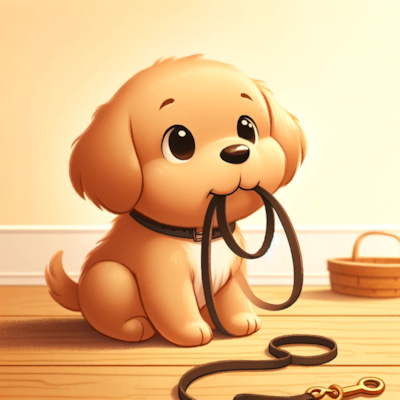
Leash training is crucial for safe and enjoyable outings with your dog. It involves more than preventing pulling; it's about encouraging partnership and respect on both ends of the leash. This guide will provide you with innovative methods to ensure your dog walks calmly by your side.
Table of Contents
Why Leash Training Matters
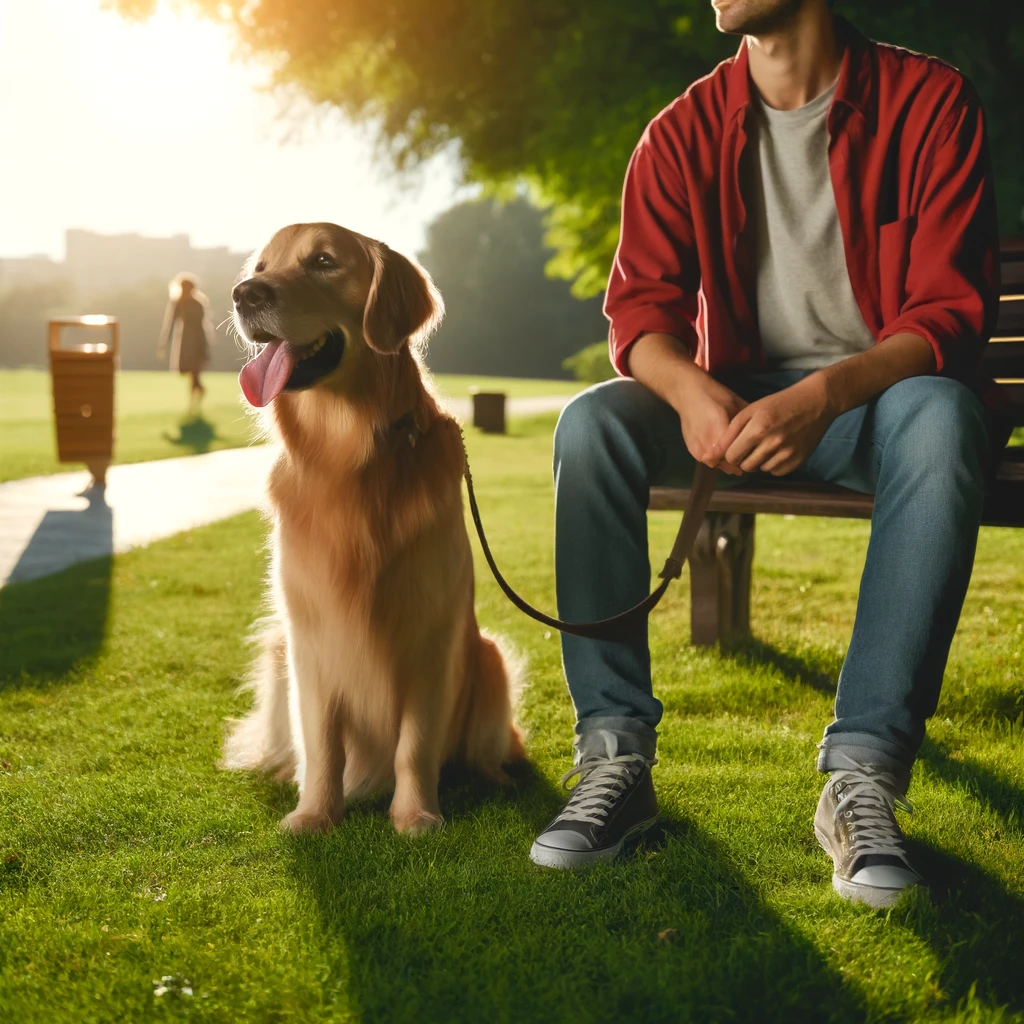
Leash training goes beyond the basic need to control your dog during walks; it's about nurturing a harmonious relationship that enhances the quality of life for both you and your pup. Here's why it's so crucial:
Benefits for Both Dog and Owner
For dogs, leash training provides structure and security. It helps them understand boundaries and expectations, which in turn reduces anxiety during outings. For owners, a well-trained dog on a leash means less stress and more enjoyment during walks. This mutual understanding increases the bond between dog and owner, making every walk an opportunity for companionship rather than a struggle.
Safety and Legal Aspects of Leash Walking
From a safety perspective, leash training is vital. It prevents dogs from running into traffic, approaching dangerous areas, or interacting unwelcomely with other animals and people. Many urban areas have leash laws that legally require dogs to be leashed in public spaces, making proper leash training not just a courtesy but a legal obligation.
Selecting Your Equipment
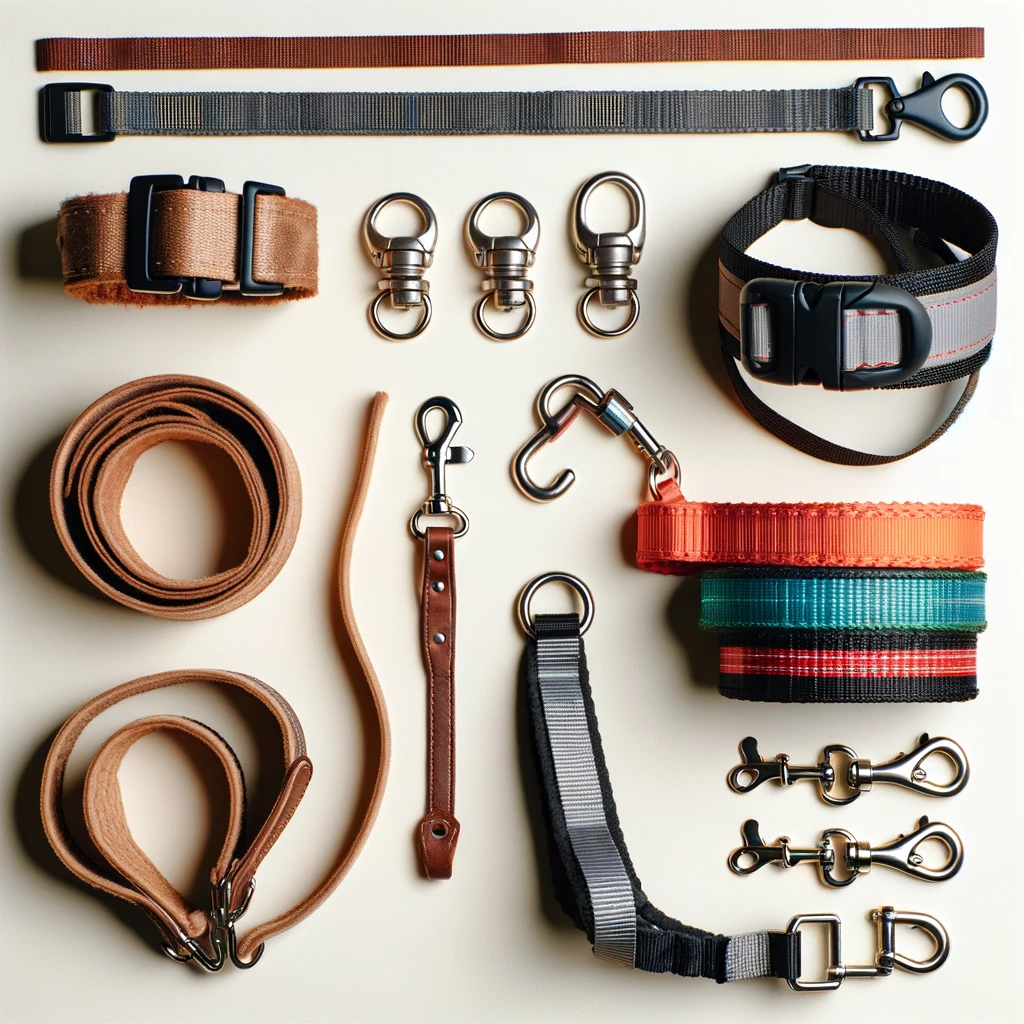
Choosing the right gear is not just about style, it's also about comfort, safety, and effectiveness. Here's how to select the best leash and collar or harness for your puppy’s leash training.
Differences Between Collars and Harnesses
Collars and harnesses serve different purposes and suit different training needs:
- Collars are suitable for dogs that do not have issues with pulling or breathing. They offer convenience for attaching ID tags and are generally easy to put on.
- Harnesses distribute pressure more evenly around the body, making them ideal for puppies, breeds prone to respiratory problems, or dogs that tend to pull. Harnesses offer better control without the risk of neck injury.
Choosing the Right Leash for Your Walking Style
Leashes come in various materials and lengths, each offering different benefits:
- Standard Leashes (usually about 6 feet long) provide enough length for freedom of movement while ensuring you can keep your dog close when needed.
- Retractable Leashes allow dogs more freedom to explore but can be difficult to manage if a dog suddenly bolts or if you need quick control.
- Adjustable Leashes have loops along the length, allowing you to shorten or lengthen the leash as necessary, which can be handy in different environments.
When selecting your leash and collar or harness, consider your dog’s size, temperament, and the environment in which you will be walking. A well-fitting harness and a sturdy leash that matches your walking style can make training sessions more effective and enjoyable for both of you.
First Steps in Leash Training
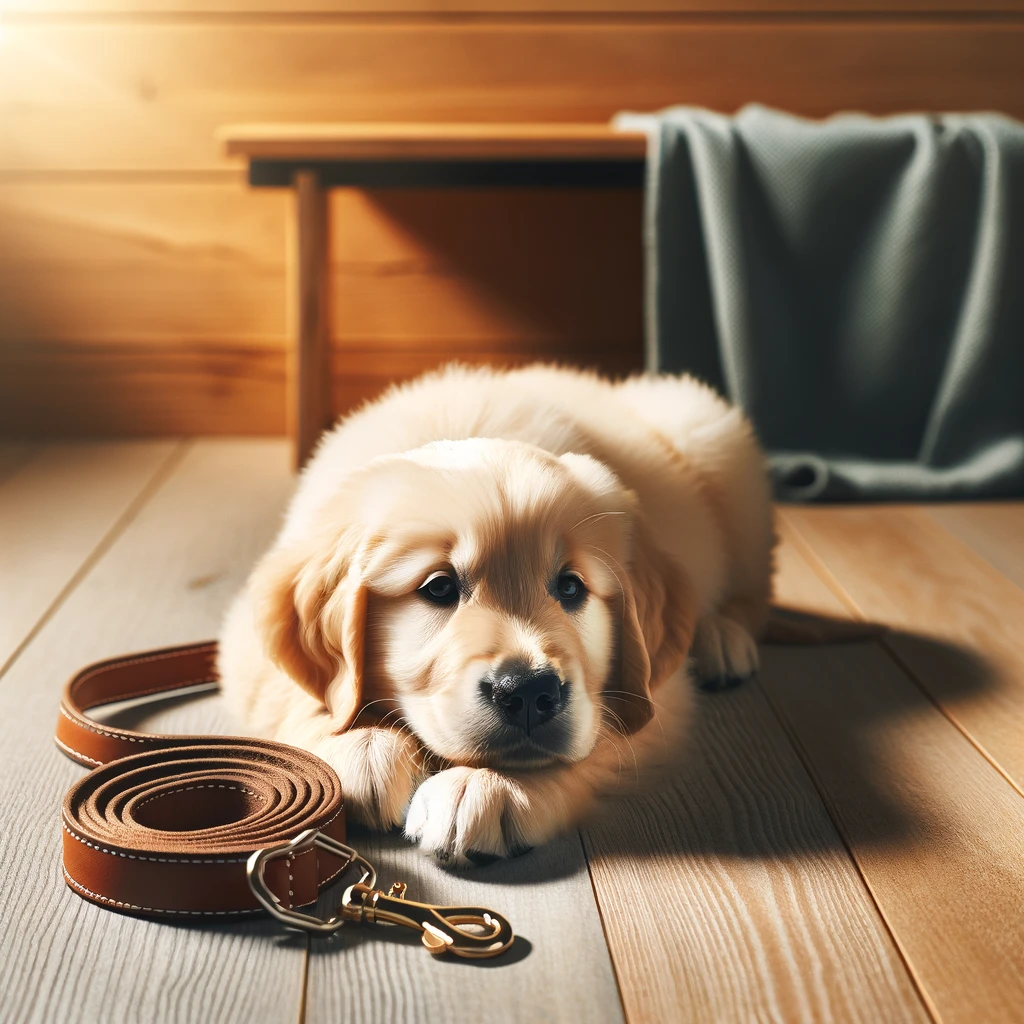
Introducing your puppy to a leash and harness can be a new experience for them and approaching it in the right way is key to setting a positive tone for future training. Here's how to start on the right foot.
Introducing the Leash and Harness in a Non-Threatening Way
Begin by allowing your puppy to investigate the leash and harness on their own. Place them on the ground and let your puppy sniff and paw at them without any pressure. You can encourage curiosity by placing treats around and on the equipment to create a positive association.
Creating Positive Associations with the Leash
Once your puppy seems comfortable with the presence of the leash and harness:
- Attach the leash to the harness or collar for short periods while at home. Do this during playtime or while feeding to associate it with positive activities.
- Start with short, indoor walks around the house, using treats and gentle encouragement to guide your pup. Reward calm behavior and the absence of resistance to the leash.
These initial steps are crucial in making the leash and harness familiar and non-threatening objects for your dog. This familiarity will make outdoor training sessions much smoother and more productive.
Core Leash Training Strategies
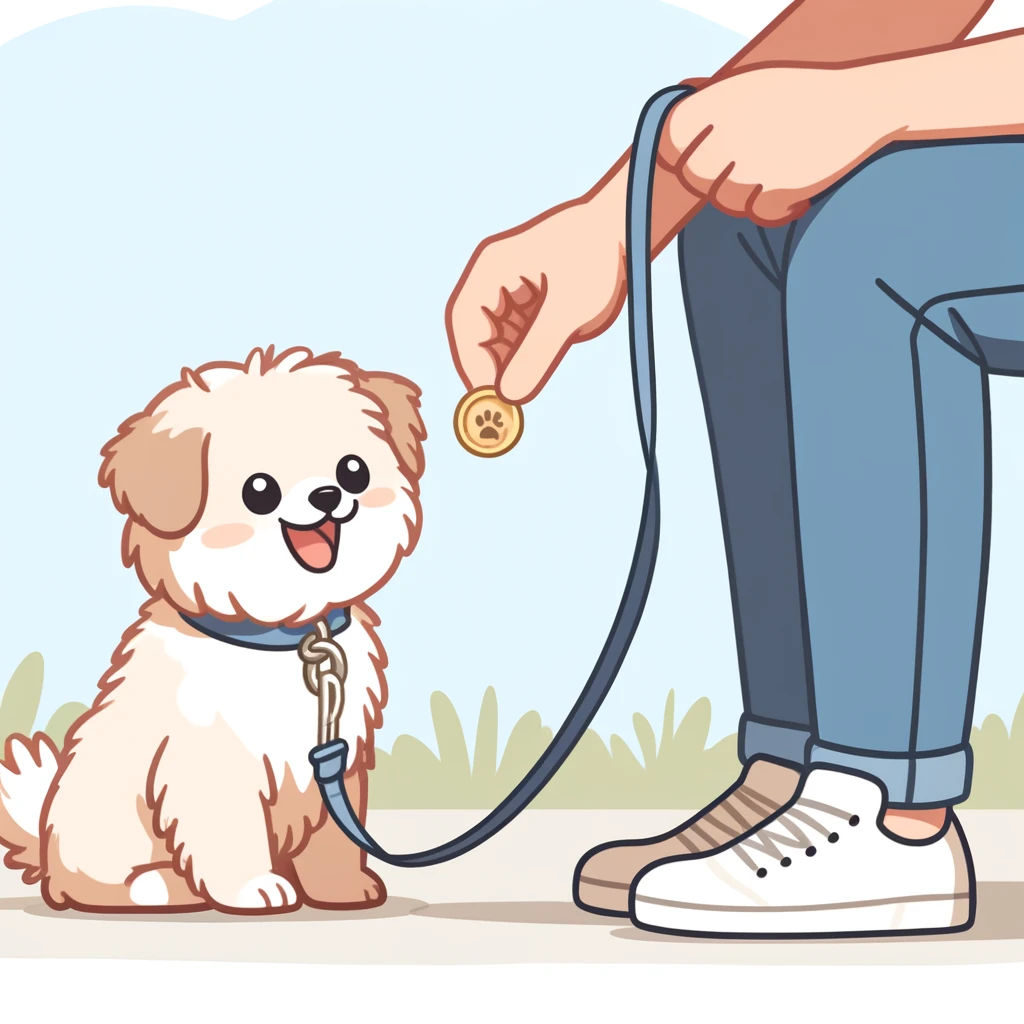
Once your puppy is comfortable with the leash and harness, it's time to start the actual training. These core strategies will help you teach your puppy/dog to walk nicely on a leash without pulling.
Establishing Basic Commands: Sit, Stay, Come
Before you hit the road, it's crucial to establish some basic obedience commands:
- Sit: Teach your dog to sit at every street corner or whenever you stop walking. This reinforces patience and attentiveness.
- Stay: This command helps maintain control during walks, especially in busy or unsafe situations.
- Come: Ensures your dog will return to you when off leash or at a distance.
These commands form the foundation of good leash behavior and ensure your dog’s safety and responsiveness in various situations.
Techniques to Discourage Pulling from the Start
To prevent pulling, it’s important to establish good habits early:
- The Red Light, Green Light Technique: If your dog starts to pull, stop walking. Only resume walking when the leash is slack again. This teaches your dog that pulling gets them nowhere.
- The Lure and Reward Method: Use treats to lure your dog to walk beside you. Reward them with treats and praise when they walk nicely without pulling.
- Direction Changes: If your dog pulls in one direction, turn around and walk in the opposite direction. This unpredictability discourages pulling and keeps your dog focused on your movements.
Dealing with Challenges
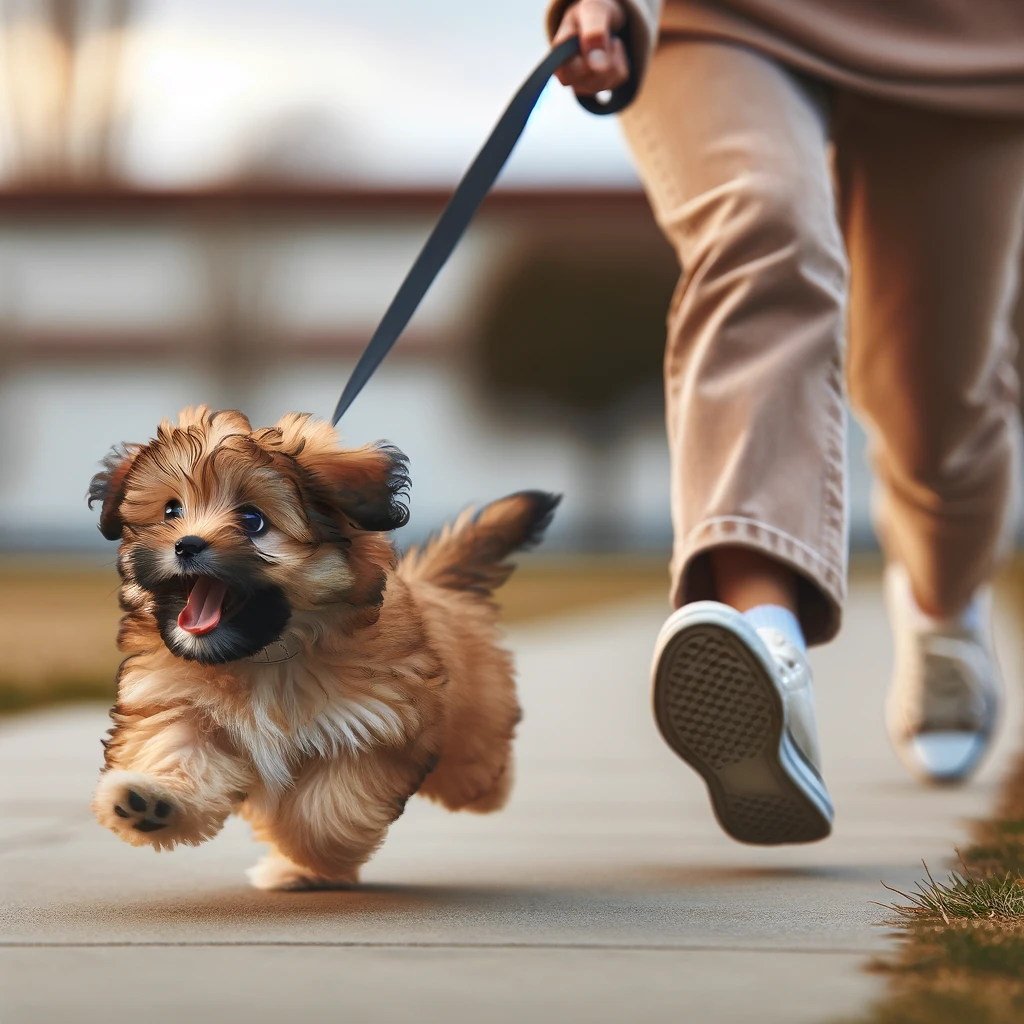
Leash training can present several challenges, from distractions to more problematic behaviors like pulling, lunging, or barking. Here’s how to manage these effectively.
Strategies for Managing Distractions
Dogs are naturally curious and can easily be distracted by sights, sounds, and smells:
- Practice in a Low-Distraction Environment: Start training in a quiet area and gradually introduce more distractions as your dog becomes more focused during walks.
- Use High-Value Treats: Keep your dog's attention on you with treats they find irresistible. Use these treats only during training to maintain their high value.
Tips for Handling Stubborn Pullers
For dogs that pull persistently, consider the following tactics:
- Proper Equipment: Ensure the harness or collar is appropriate for your dog’s size and strength. Some harnesses are specifically designed to discourage pulling.
- Pulse Technique: Apply gentle pressure on the leash when your dog begins to pull, releasing it when they yield. This technique, combined with verbal commands and rewards, can effectively teach them not to pull.
- Reward Spontaneous Checks: Reward your dog when they look back at you or check in during walks. This reinforces checking in as a desirable behavior during walks.
Dealing with Lunging or Barking
Lunging or barking at other dogs or people can be challenging:
- Focus on Desensitization: Gradually expose your dog to the things that trigger them, at a distance where they don’t react, and slowly decrease that distance over time.
- Teach an Alternative Behavior: Train your dog to perform a specific action (like sitting or looking at you) when they see another dog or person. Reward them for complying with this behavior in the presence of triggers.
These strategies require patience and consistency, but over time, they can significantly improve your dog’s leash behavior and make your walks more enjoyable.
Enhancing Your Leash Skills
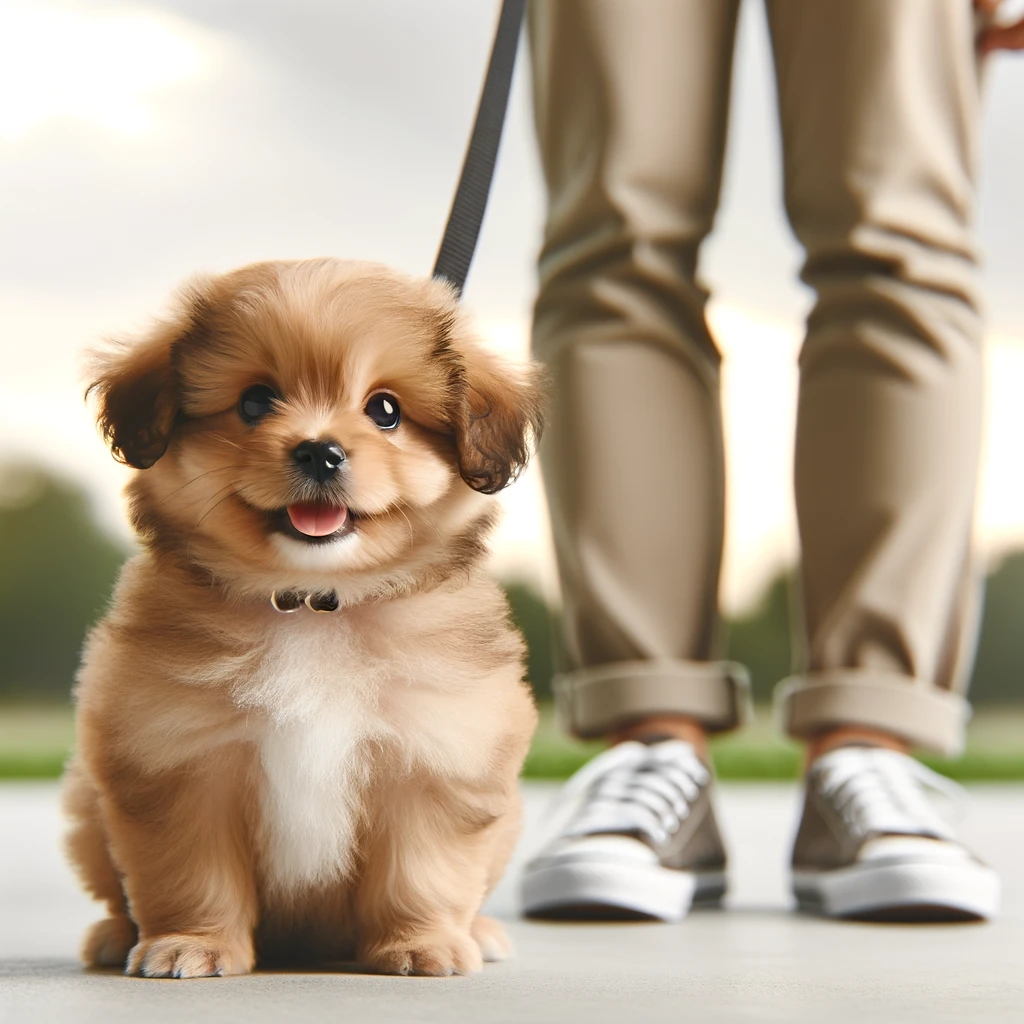
Once your dog has mastered basic leash manners, it’s time to elevate their training with advanced techniques. These methods will help refine their skills and ensure they behave impeccably in any situation.
Training Your Dog to Heel
The heel command is one of the most beneficial advanced skills. It teaches your dog to walk beside you, rather than pulling ahead or lagging behind:
- Positioning: Start by having your dog sit beside you on your preferred side—typically, the left. Use a treat to lure their head to your knee and say “Heel.”
- Walking: Take a step forward and encourage your dog to follow while staying aligned with your knee. Reward them for maintaining the position as you walk.
- Consistency: Practice the heel command regularly, gradually increasing the duration and complexity of your walking routes.
Incorporating Varied Environments and Obstacles
To truly test and reinforce your dog’s leash skills, introduce more challenging environments and obstacles:
- Busy Streets: Practice walking on busy streets to teach your dog to maintain their composure with heavy traffic and loud noises.
- Nature Trails: Trails offer different terrains and new smells, providing your dog with sensory challenges.
- Obstacle Courses: Set up an obstacle course in your yard or a park. This can include weaving through poles, walking on different surfaces, and navigating around objects while on a leash.
These advanced techniques not only improve your dog’s leash skills but also enhance their overall obedience and responsiveness. They provide mental stimulation and deepen the bond between you as you work together to overcome new challenges.
Keeping It Consistent
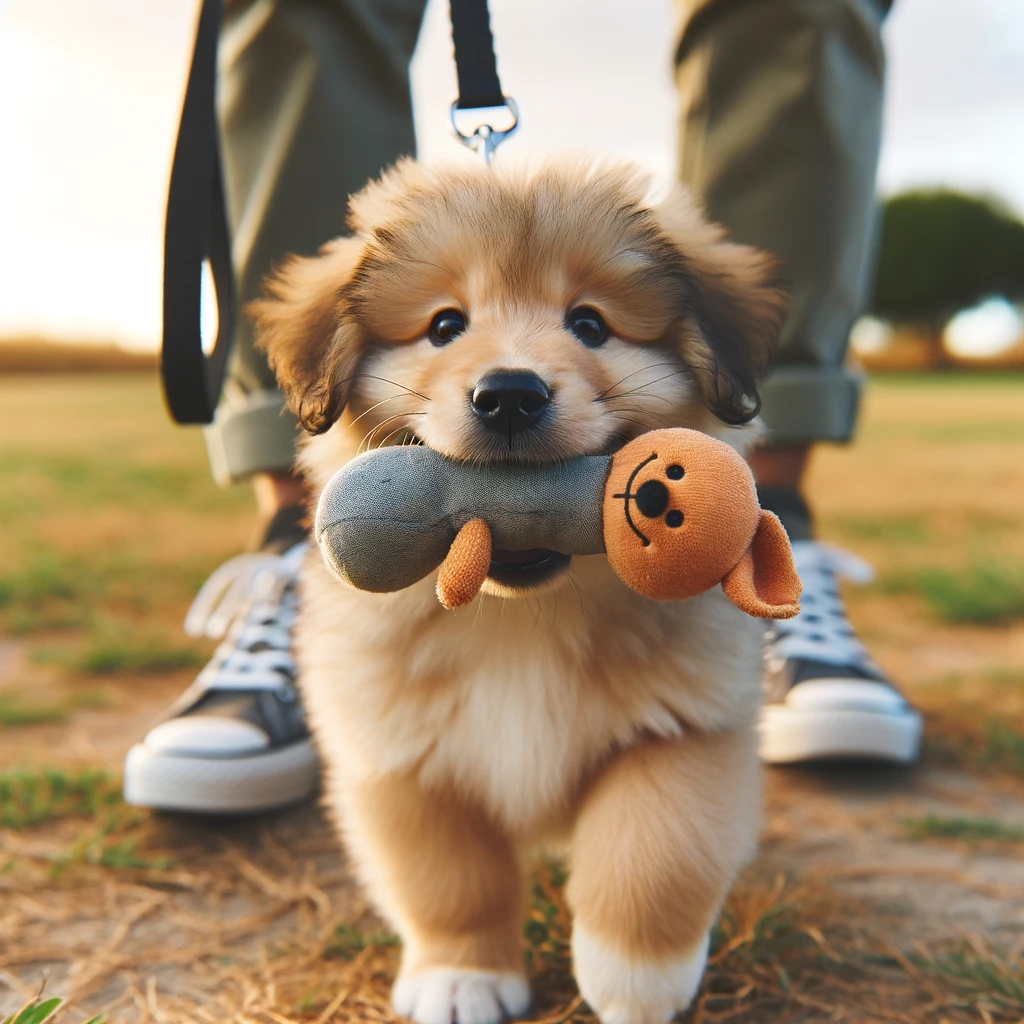
Maintaining and reinforcing leash training is essential for ensuring your dog's skills remain sharp and their behavior remains reliable over time. Here are some tips for long-term success:
Consistent Practice Routines
Regular practice is key to reinforcing the behaviors you’ve taught:
- Daily Walks: Incorporate training into your daily walks. Use this time to practice commands and correct any missteps.
- Vary Your Routes: Changing your walking route regularly prevents boredom and keeps your dog engaged, making each walk an opportunity for learning.
- Scheduled Training Sessions: Set aside specific times each week for focused training sessions to practice new skills or refine old ones.
Engaging and Fun Exercises to Reinforce Training
Keeping training enjoyable helps your dog stay interested and eager to learn:
- Play-Based Training: Incorporate games like fetch or tug-of-war into your training, using the release of the toy as a reward for obedience.
- Interactive Toys: Use toys that can be filled with treats or that require problem-solving skills during walks. These can divert your dog’s energy into constructive activities.
- Social Walks: Walk with other dogs and their owners. This not only socializes your dog but also helps reinforce calm behavior around other dogs.
Routine Reviews and Adjustments
As your dog matures or as circumstances change, their training needs may evolve:
- Assess Progress: Regularly evaluate your dog’s progress and identify any new challenges that might have emerged.
- Adjust Techniques: If certain strategies no longer work as effectively or if your dog’s behavior changes, adapt your training methods accordingly.
Wrapping Up
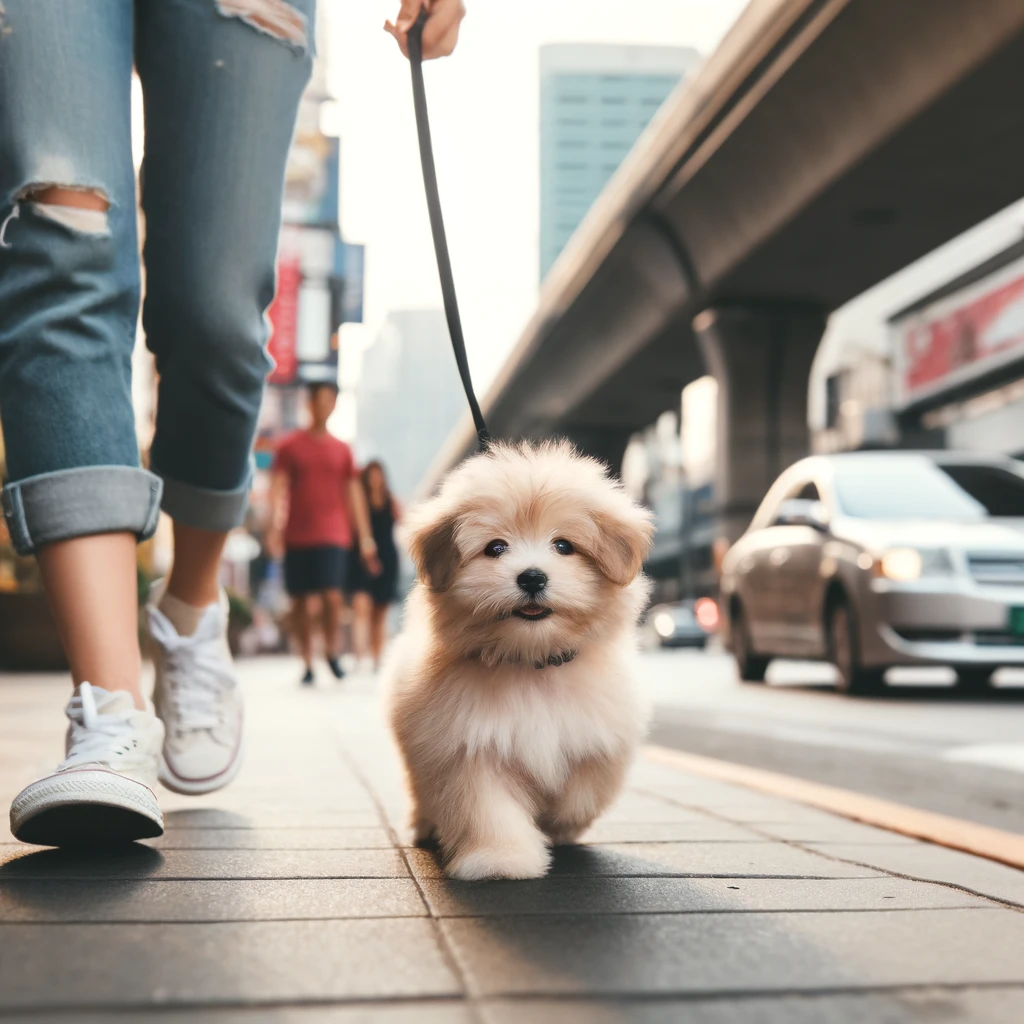
Congratulations on taking the steps to effectively leash train your dog! Leash training is not just about teaching your dog to walk nicely beside you; it's about fostering a mutual understanding and respect that enhances every interaction you share. With the skills and techniques covered in this guide, you're well on your way to enjoying more peaceful, enjoyable walks and adventures with your canine companion.
Recap of the Importance and Benefits of Leash Training
- Leash training improves safety for both you and your dog, ensuring walks are enjoyable and stress-free.
- It helps fulfill legal requirements in areas with leash laws, preventing fines and other penalties.
- Regular leash training strengthens the bond between you and your dog, building trust and improving communication.
Scroll down to see FAQs about puppy leash training.
What To Read Next
Puppy Training Guide for New Owners
Is Lone Star Pups a Puppy Mill? 26 of the Best Reasons Why We Are Not A Puppy Mill
Frequently Asked Questions
How long does it take to leash train a dog? The duration of leash training can vary widely depending on the dog's age, temperament, and previous training experiences. Typically, basic leash skills can be established within a few weeks, but mastering more advanced techniques like heeling may take longer.
What should I do if my dog continues to pull on the leash despite training? If your dog persists in pulling, reassess your training methods. Consider using a no-pull harness and intensify training efforts focused on stopping when pulling occurs. Consistency is key, and sometimes slight adjustments in technique can make a big difference.
Can I start leash training a puppy as soon as I bring them home? Yes, you can start introducing a puppy to a leash and collar or harness at home as soon as they arrive. However, keep initial sessions short and positive, focusing on getting them comfortable with wearing the gear before starting actual walking training.
Is it okay to use retractable leashes for training? Retractable leashes are not recommended for training because they can encourage pulling. A fixed-length leash is better for teaching your dog to walk close to you without pulling.
How can I make leash training fun for my dog? Incorporate lots of rewards, such as treats and favorite toys, into your training sessions. Keep the mood light and playful to help your dog associate leash training with positive experiences.



